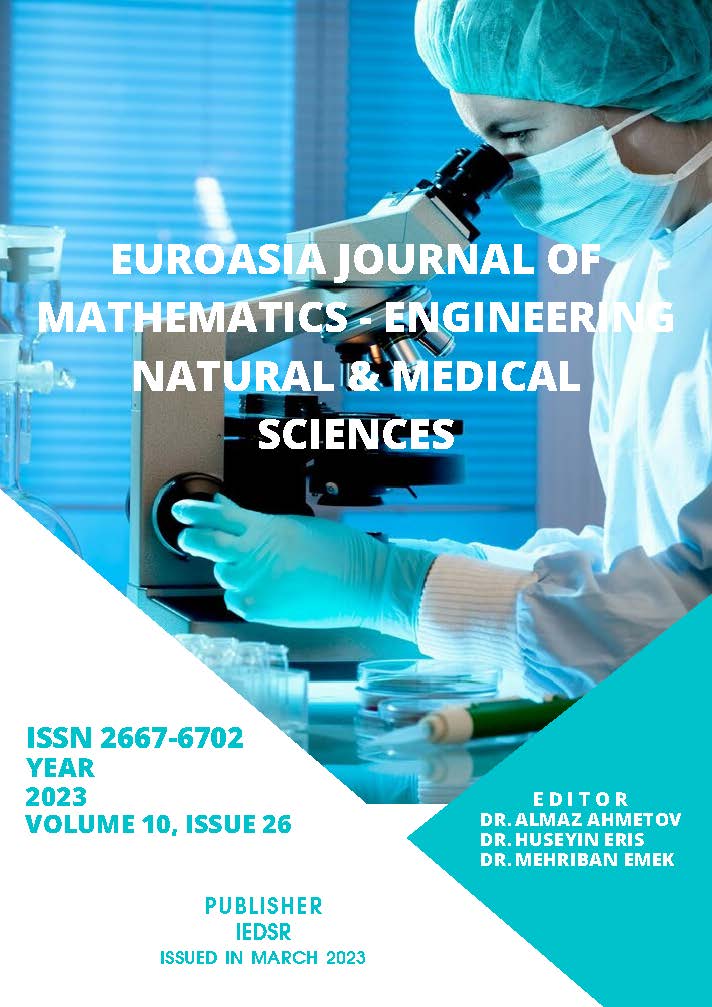Mechanical Properties of Different Volcanic Origin Rock Based Geopolymer Mortars Activated with Sodium Hydroxide
DOI:
https://doi.org/10.5281/zenodo.7771748Keywords:
Volcanic tuff, volcanic slag, geopolymer, alkali activation, sodium hydroxideAbstract
Different pozzolans are used in the cement industry to ensure sustainable cement production. Pyroclastic rocks, which are an important natural source of pozzolana, which can be in argillized or zeolized structure, are formed by the accumulation of all kinds of clastic materials from eruptive volcanoes in a storage area during volcanic events. The rocks formed by the consolidation of volcanic ash and volcanic dust are called "volcanic tuff". Rocks composed of volcanic glass in basic composition are called "volcanic slag". The most important feature of pyroclastic rocks is that they can easily decompose into zeolite minerals. Especially in Turkey, zeolite deposits containing clinoptilolite mineral were formed in this way. These pyroclastics with hydraulic properties rich in zeolite minerals are known as natural pozzolans. In this study, the usability of volcanic origin rocks named "VC" and "VT", respectively, obtained from Antakya with "volcanic slag" feature and Manisa Gördes region with "volcanic tuff" feature, in geopolymer mortar production was investigated. 40x40x160mm geopolymer mortar samples were produced by using sodium hydroxide at 8% sodium concentration for alkali activation of rocks of volcanic origin. The rocks of volcanic origin were ground according to ASTM-C618 pozzolanic fineness limit.The produced geopolymer mortar samples were subjected to heat curing at 80°C for 36, 72 and 96 hours. It was observed that the highest flexural strength value was found in VT12.5 sample (7.8 MPa) and the highest compressive strength value was found in VT12.5 sample (44.3 MPa) in geopolymer mortars that were thermally cured in an oven at 80°C curing temperature for 96 hours.
References
Altan, E., Erdoğan, S.T., (2012), Alkali activation of a slag at ambient andbelevated temperatures. Cement and Concrete Composites, 34(2):131-139pp.
Al Bakri, M., Kamarudin, H., BinHussain M., Nizar, I., Zarina, Y. and Rafiza, A.R., (2011), The effect of curing temperature on physical and chemical properties of geopolymers. Physics Procedia, 22, 286-291.
Alemayehu, E., Lennartz, B., (2009), Virgin volcanic rocks: kinetics and equilibrium studies for the adsorption of cadmium from water. J. Hazard. Mater. 169 (1-3) 395-401, https://doi.org/10.1016/j.jhazmat.2009.03.109.
ASTM C1437-20, (2020), Standard test method for flow of hydraulic cement mortar. ASTM International, West Conshohocken, PA.
ASTM C618-19, (2019), Standard specification for coal fly ash and raw or calcined natural pozzolan for use in concrete. ASTM International, West Conshohocken, PA.
ASTM C187-16, (2016), Standard test method for amount of water required for normal consistency of hydraulic cement paste. ASTM International, West Conshohocken, PA.
Başçik, H.İ., (2019), Kalsine edilmiş doğal puzolan esaslı geopolimer harç geliştirilmesi. Yüksek Lisans Tezi, Ege Üniversitesi, Lisansüstü Eğitim Enstitüsü, İnşaat Mühendisliği ABD.
Davidovits, J., (2008), Geopolymer chemistry and applications. Geopolymer Institute, ISBN: 2-951-48201-9, p 585, 255-275.
Davidovits, J., (1991), Geopolymers: inorganic polymeric new materials. Journal of Thermal Analysis, 37, 1633-1656.
Ergeshov, Z., (2021), Uçucu kül tabanlı geopolimer harçlarda silis dumanı ikamesinin fiziksel ve mekanik özellikleri üzerine etkilerinin araştırılması. Yüksek Lisans Tezi, Erciyes Üniversitesi, Fen Bilimleri Enstitüsü, İnşaat Mühendisliği ABD.
Ekaputri, J. J., Junaedi, S., Wijaya, (2017), Effect of curing temperature and fiber on metakaolin-based geopolymer. Procedia Eng. 171 572 -583 .
Fisher, R. V., (1961), Proposed classification of volcaniclastic sediments and rocks. Geol. Soc. Amer. Bull. 72, 1409-1414.
Helvacı, C., ve Erkül, F., (2001), Volkaniklastik Kayaçlar: oluşumu, genel özellikleri ve sınıflaması. DEÜ, Mühendislik Fakültesi Basım Ünitesi, 93 sayfa, İzmir.
IEA, (2015), Energy Technology Perspectives-Mobilising Innovation to Accelerate Climate Action.
Jun Y., Oh E.J. (2014), Mechanical and microstructural dissimilarities in alkali activation for six Class F Korean fly ashes. Construction and Building Materials, 52, 396-403.
Karadağ, S., (2021), Öğütülmüş granüle yüksek fırın cüruf bazlı geopolimer betonların %5 sülfürik asit ortamında mekanik özelliklerinin ve kimyasal durabilitesinin araştırılması. Yüksek Lisans Tezi, İstanbul Gelişim Üniversitesi, Lisansüstü Eğitim Enstitüsü, İnşaat Mühendisliği ABD.
Khale, D., Chaudhary, R., (2007), Mechanism of geopolymerizaton and factors ınfluencing its development: A Review. Journal of the Material Science, 42, 729-746.
Komnitsas, K., Zaharaki, D. and Perdikatsis, V., (2007), Geopolymerisation of low calcium ferronickel slags. Journal of the Material Science, 42, 3073-3082.
Mo, B., Zhu, H., Cui, X., He, Y., Gong, S., (2014), Effect of curing temperature on geopolymerization of metakaolin - based geopolymers. Appl. Clay Sci. 99 144-148 .
Nagral, M. R., Ostwal, T., Chitawadag, M., (2014), Effect of curing temperature and curing hours on the properties of geopolymer concrete. Int. J. Comput. Eng. Res. 4 ( 9 ) 1-11.
Nisbet, M. A., (1996), Information the reduction of resource ınput and emissions achieved by addition of limestone to portland cement. Portl. Cem. Assoc., c. 9781, sayı 847, ss. 0-10.
Norholm, A., (1995), Notes on energy conservation. FL Smidth and Co. Seminar, Istanbul, Turkey.
Okucu, A., (2000), Volkanik tüflerle birlikte cürufun çimento katkı maddesi olarak kullanılabilirliği. Balıkesir Üniversitesi Mühendislik ve Mimarlık Fakültesi Dergisi, Balıkesir, 73-80 s.
Rose, W.I., Durant, A.J., (2009), Fine ash content of explosive eruptions. J. Volcanol. Geotherm. Res. 186 (1-2) 32-39, https://doi.org/10.1016/j. jvolgeores.2009.01.010.
Santa, R.A.A.B., Bernardin, A.M., Riella, H.G., Kuhnen, N.C., (2013), Geopolymer synthetized from bottom coal ash and calcined paper sludge. J. Clean Prod. 57 302-307, https://doi.org/10.1016/j.jclepro.2013.05.017.
Schmid, R., (1981), Descriptive nomenclature and classification of pyroclastic deposits and fragments: recommendations of the IUGS Subcommision on the Systematics of Igneous rocks. Geology, 9, 41-3.
TS EN 196-1, (2009), Çimento Deney Metotları- Bölüm 1: Dayanım Tayini. TSE, Ankara.
Villa, M. S. E., Spada, F., (2005), İItalcementi Group Crushing and Grinding Course.
Venuat, M., (1980), Lightweight Agregates-an Uptading Survey of Materials. Production Technology, Innovations and Inventions, Lightweight Concrete, The Concrete Society, The Construction Pres, Lancester London Newyork.
Wadge, G., (1984), Comparison of volcanic production rates and subduction rates in the Lesser Antilles and Central America. Geology 12 (9) 555–558, https://doi.org/10.1130/0091-7613(1984)122.0.CO;2.
Downloads
Published
How to Cite
Issue
Section
License
Copyright (c) 2023 Euroasia Journal of Mathematics, Engineering, Natural & Medical Sciences

This work is licensed under a Creative Commons Attribution-NonCommercial 4.0 International License.


